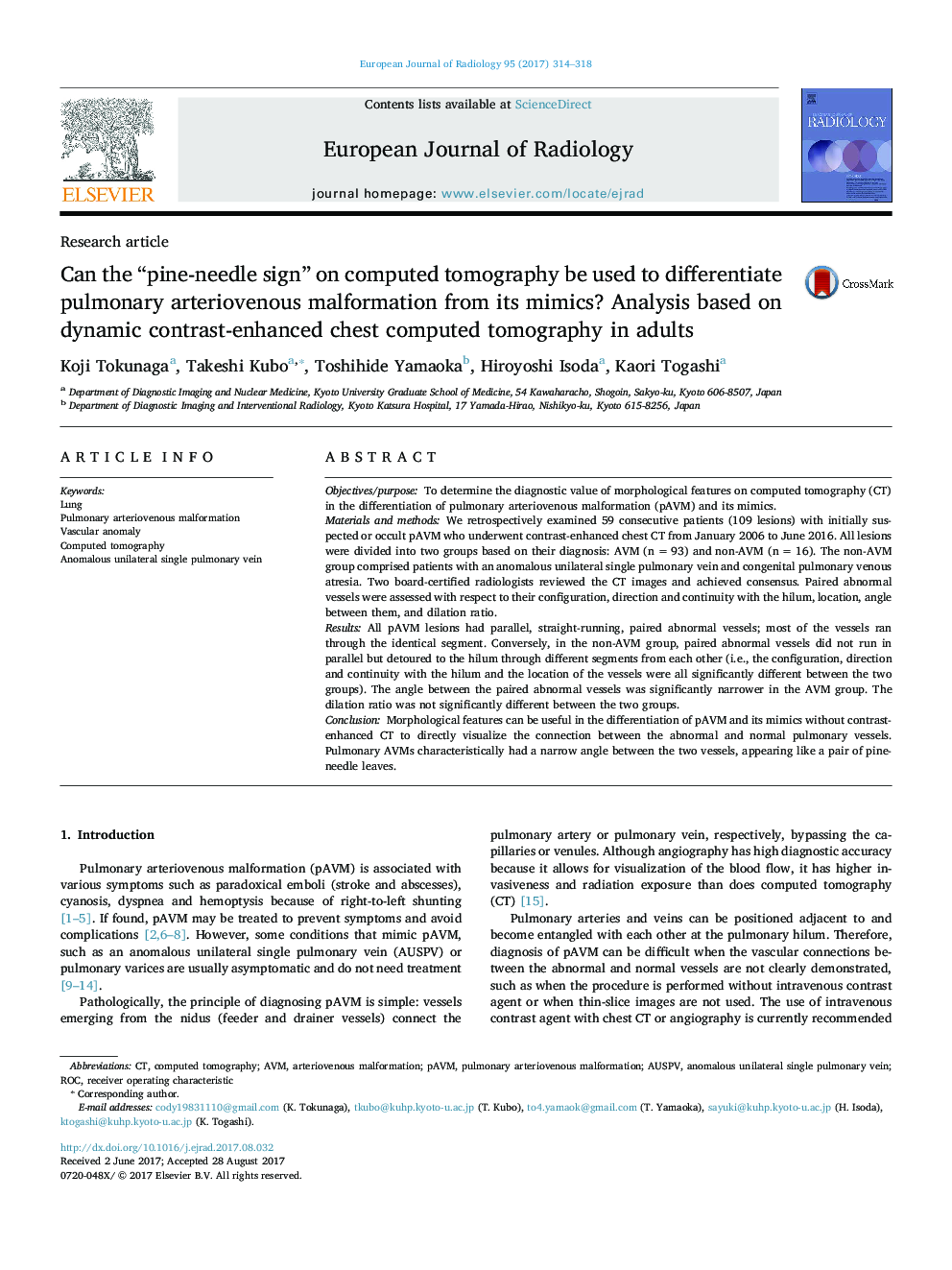| کد مقاله | کد نشریه | سال انتشار | مقاله انگلیسی | نسخه تمام متن |
|---|---|---|---|---|
| 5725991 | 1609725 | 2017 | 5 صفحه PDF | دانلود رایگان |

- The angle between dilated vessels is an excellent morphological index for pAVM.
- Vessels in pAVM have a narrow angle resembling a pair of pine-needle leaves.
- The pine-needle sign effectively differentiates pAVM from its mimics.
- pAVM may be diagnosed by the pine-needle sign even without contrast enhancement.
- The pine-needle sign could obviate the need for further diagnostic examination.
Objectives/purposeTo determine the diagnostic value of morphological features on computed tomography (CT) in the differentiation of pulmonary arteriovenous malformation (pAVM) and its mimics.Materials and methodsWe retrospectively examined 59 consecutive patients (109 lesions) with initially suspected or occult pAVM who underwent contrast-enhanced chest CT from January 2006 to June 2016. All lesions were divided into two groups based on their diagnosis: AVM (n = 93) and non-AVM (n = 16). The non-AVM group comprised patients with an anomalous unilateral single pulmonary vein and congenital pulmonary venous atresia. Two board-certified radiologists reviewed the CT images and achieved consensus. Paired abnormal vessels were assessed with respect to their configuration, direction and continuity with the hilum, location, angle between them, and dilation ratio.ResultsAll pAVM lesions had parallel, straight-running, paired abnormal vessels; most of the vessels ran through the identical segment. Conversely, in the non-AVM group, paired abnormal vessels did not run in parallel but detoured to the hilum through different segments from each other (i.e., the configuration, direction and continuity with the hilum and the location of the vessels were all significantly different between the two groups). The angle between the paired abnormal vessels was significantly narrower in the AVM group. The dilation ratio was not significantly different between the two groups.ConclusionMorphological features can be useful in the differentiation of pAVM and its mimics without contrast-enhanced CT to directly visualize the connection between the abnormal and normal pulmonary vessels. Pulmonary AVMs characteristically had a narrow angle between the two vessels, appearing like a pair of pine-needle leaves.
Journal: European Journal of Radiology - Volume 95, October 2017, Pages 314-318